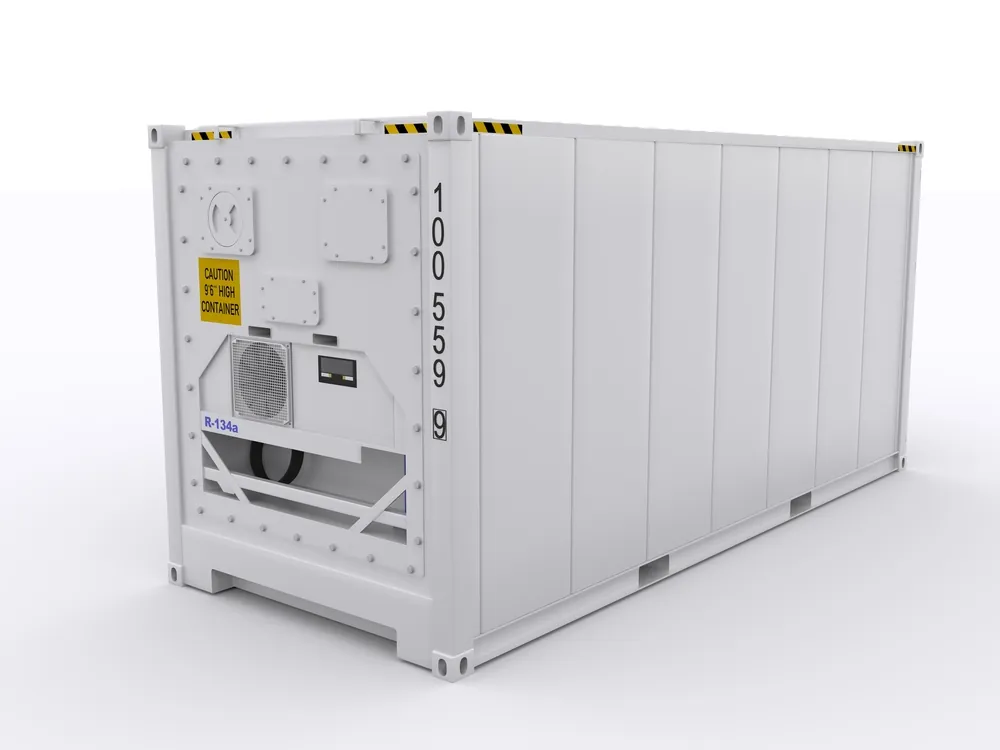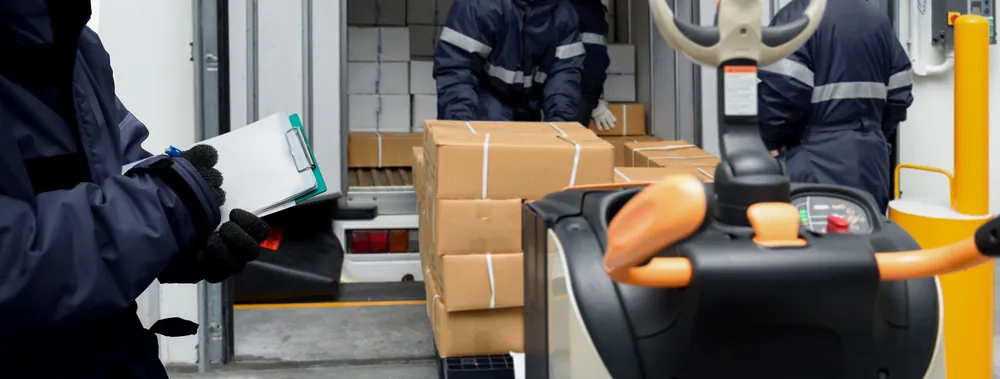As businesses navigate the intricacies of transporting perishable goods, pharmaceuticals, or other sensitive materials, the fundamental question arises:
What are some tips for temperature controlled shipping?
Shipping temperature-controlled items is a complex process that demands meticulous planning and execution to ensure the products reach their destination in impeccable condition.
#1- Packaging Excellence:
The significance of packaging in temperature-controlled shipping cannot be overstated, as it serves as the cornerstone for ensuring the safe and secure transportation of sensitive goods. The journey toward optimal packaging commences with a deliberate selection of materials designed to insulate and protect the contents from the unpredictable nature of external temperature variations.
- High-Density Foam:
- High-density foam stands out as an excellent choice for insulation.
- Its ability to provide a consistent and reliable thermal barrier ensures that the internal environment of the packaging remains stable throughout the shipping process.
- This material acts as a guardian, preventing temperature fluctuations that could compromise the quality and integrity of the items within.
- Thermal Blankets:
- Thermal blankets present another valuable option.
- These specialized blankets are designed to wrap around the cargo, offering an extra layer of insulation.
- Thermal blankets not only contribute to temperature control but also provide an added cushion against potential physical impacts during transit.
- This dual functionality is particularly crucial in maintaining both the thermal stability and structural integrity of the shipped items.
- Refrigerated Containers:
- For more advanced temperature-controlled shipping needs, specialized refrigerated containers come into play.
- Equipped with sophisticated cooling systems, these containers allow precise temperature regulation.
- They offer a comprehensive solution, ensuring that items requiring stringent temperature conditions, such as pharmaceuticals or perishable goods, reach their destination with the utmost freshness and efficacy.
However, the effectiveness of temperature-controlled packaging goes beyond insulation. It is equally vital to prioritize the durability and resilience of the packaging material.
- The packaging must withstand the various challenges posed by the transportation process, including handling, loading, and unloading.
- A sturdy packaging design ensures that the internal environment remains undisturbed, minimizing the risk of both thermal exposure and physical damage to the container and its valuable contents.
In essence, the dual emphasis on insulation and durability transforms packaging into a robust shield against the uncertainties of shipping. This meticulous approach not only safeguards the temperature-sensitive items from external factors but also enhances the overall reliability of the shipping process. As businesses invest in packaging excellence, they are laying the groundwork for a successful temperature-controlled shipping experience, ensuring that their products arrive at their destination in optimal condition.
#2- Utilize Reliable Temperature Controlled Shipping Systems:
In the realm of temperature-controlled shipping, the utilization of advanced temperature monitoring systems becomes a linchpin in ensuring the success of the entire process. Temperature-sensitive items, be it pharmaceuticals, perishable goods, or other delicate materials, demand a meticulous approach to maintaining the required conditions during transit. Incorporating state-of-the-art temperature monitoring systems is a strategic move that can significantly enhance the precision and efficacy of temperature controlled shipping.
- Temperature Data Loggers:
- Employing temperature data loggers is a proactive step towards achieving optimal temperature controlled shipping.
- These sophisticated devices continuously record and store temperature data at regular intervals throughout the journey.
- By doing so, they offer a comprehensive and detailed overview of the environmental conditions experienced by the shipped items, allowing for thorough post-shipment analysis.
- Real-Time Monitoring Devices:
- Real-time monitoring devices, on the other hand, take temperature control to a more immediate and responsive level.
- Equipped with advanced sensors, these devices provide live, accurate readings of the internal environment of the packaging in real-time.
- This instantaneous feedback enables shippers and logistics personnel to make timely decisions and take corrective actions if any deviations from the specified temperature range are detected.
In the context of temperature controlled shipping, these monitoring systems extend beyond mere observation; they serve as proactive guardians of product quality and integrity. By offering real-time visibility into the conditions within the packaging, they empower stakeholders with the tools needed to respond swiftly and decisively to any challenges that may arise during transit.
This proactive approach is particularly crucial in mitigating potential risks associated with temperature fluctuations. Whether it’s unexpected delays, unforeseen temperature spikes or drops, or disruptions in the shipping process, the implementation of reliable temperature monitoring systems ensures that deviations from the specified temperature range are promptly identified and addressed.
In essence, by incorporating temperature data loggers and real-time monitoring devices into the temperature controlled shipping strategy, businesses can establish a robust and proactive framework. This not only instills confidence in the reliability of the shipping process but also assures customers and stakeholders that stringent measures are in place to uphold the quality and efficacy of the shipped items.
#3- Opt for Expedited Temperature Controlled Freight Shipping:
In the realm of transporting temperature-sensitive goods, expeditious handling becomes a paramount consideration to uphold the quality and integrity of the shipped items. Choosing expedited temperature controlled freight shipping options stands out as a strategic move to minimize transit time and mitigate potential risks associated with prolonged journeys.
- Prioritize Expedited Shipping:
- Temperature controlled freight shipping necessitates a heightened focus on reducing transit time to the bare minimum.
- Opting for expedited shipping options becomes crucial, particularly when items demand specific temperature conditions to maintain their quality.
- The emphasis on shorter shipping times is two-fold: it not only minimizes the duration that products spend in transit but also significantly decreases the likelihood of temperature fluctuations, safeguarding the integrity of temperature-sensitive cargo.
- Collaborate with Experienced Carriers:
- In the context of temperature controlled freight shipping, collaboration with carriers experienced in handling such delicate cargo is instrumental.
- Work closely with reliable carriers well-versed in the intricacies of maintaining precise temperature conditions during transportation.
- Their expertise ensures not only the efficiency of the shipping process but also the adherence to the stringent requirements of temperature-sensitive items.
- Enhance Efficiency through Collaboration:
- Effective collaboration between shippers and carriers in the domain of temperature controlled freight shipping is a key factor in optimizing the shipping process.
- Communicate transparently with carriers regarding the specific temperature conditions required for the cargo.
- Establishing clear communication channels and providing detailed guidelines contribute to a seamless and efficient shipping experience, reducing the risk of deviations from the specified temperature range.
By incorporating these strategies, businesses underscore the specialized nature of their shipping requirements. Opting for expedited services in this context not only aligns with the need for swift transportation but also emphasizes the intricacies involved in maintaining precise temperature conditions. Collaborating with carriers experienced in temperaturecontrolled freight shipping further solidifies the commitment to quality and ensures that temperature-sensitive items reach their destination in optimal condition. This comprehensive approach not only addresses the immediate need for expeditious transit but also underscores the importance of expertise in handling delicate cargo with specific temperature considerations.
#4- Plan for Contingencies in Temperature Controlled Shipping:
In the intricate landscape of cold chain logistics, meticulous planning is essential, yet the unpredictable nature of logistics necessitates a comprehensive approach to handle unforeseen challenges. A robust contingency plan becomes the safeguard against disruptions, ensuring the continuity of the shipping process and safeguarding the integrity of temperature-sensitive items.
- Establish a Comprehensive Contingency Plan:
- Within the realm of temperature controlled shipping, a comprehensive contingency plan acts as a safety net for unexpected scenarios.
- Develop a well-thought-out strategy that anticipates potential challenges, encompassing the entire spectrum of temperature-controlled logistics.
- Backup Power Sources for Refrigeration Units:
- Given the critical role of refrigeration in temperature controlled shipping, having backup power sources is paramount.
- Equip refrigeration units with reliable backup power systems to maintain the required temperature conditions in case of power outages or mechanical failures.
- Clear Communication Protocols with Carriers:
- Transparent communication is foundational in temperature controlled shipping contingency planning.
- Establish clear communication protocols with carriers, ensuring that they are well-informed about the sensitivity of the cargo and the procedures to follow in case of unforeseen circumstances.
- Alternative Routes and Contingency Routes:
- Recognizing the potential for unexpected delays or disruptions, identify alternative routes that can be quickly implemented.
- In the face of unforeseen challenges such as road closures or weather-related issues, having contingency routes mapped out ensures a proactive response, minimizing the impact on transit times and temperature control.
- Swift Response Mechanisms:
- A well-structured contingency plan emphasizes the importance of swift response mechanisms.
- Equip the logistics team and carriers with the tools and resources needed to respond promptly to any challenges that may arise, ensuring that corrective actions can be taken swiftly.
By weaving the term “temperature controlled shipping” into the fabric of contingency planning, businesses underscore the specialized nature of their shipping requirements. This comprehensive contingency approach not only addresses the immediate need for safeguarding against unforeseen events but also emphasizes the intricacies involved in maintaining precise temperature conditions throughout the shipping journey. In essence, a well-prepared contingency plan in the context of temperature controlled shipping is a proactive strategy that minimizes risks, maximizes responsiveness, and ultimately preserves the quality and integrity of temperature-sensitive items during transit.



